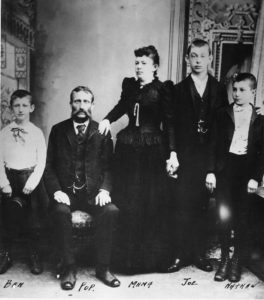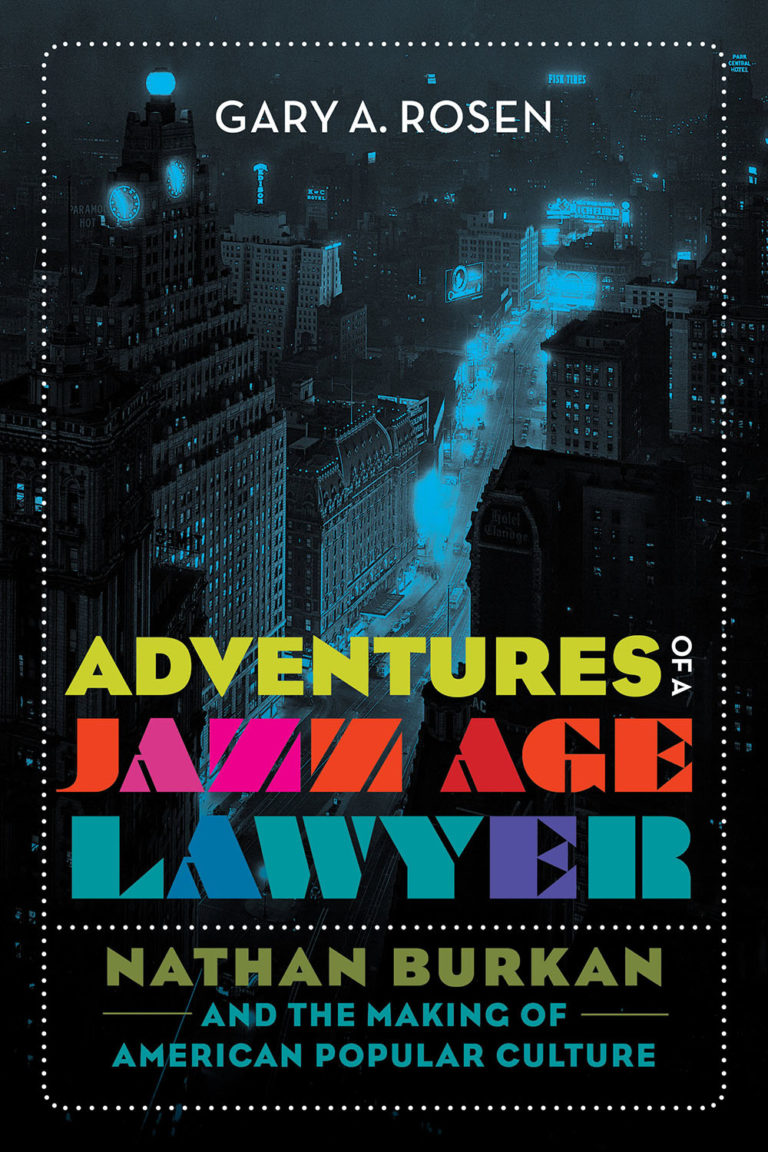Immigrant Passages: Nathan Burkan and Victor Herbert

Nathan Burkan was eight years old when he left Iaşi, in what is today Romania, bound for New York City with his mother, Tillie, and brothers Joseph and Benjamin. They steamed past the newly dedicated Statue of Liberty aboard the City of Berlin on December 20, 1886, alighting at the Castle Garden immigration station. The head of the Burkan household, Moritz, had already settled on the Lower East Side, where he would operate a succession of luncheonettes and pool rooms in the heart of the red-light district. Although they hailed from an important center of Jewish culture, where they were subjects of the emperor of Austria, in the hierarchy of New York Jewry the Burkans were on the low rung, reviled as “Russian” greenhorns by the tonier and better-established “Germans.”
Nathan, the middle son, owed his swift ascent into the professional class to two of the most potent engines of assimilation and upward mobility the city had to offer. After passing a highly competitive entrance examination at age fifteen, he enrolled in tuition-free City College. There, long before the school became a Jewish bastion, he survived a punishing weeding-out process (the attrition rate hovered around 90 percent) and graduated in three years. By then a fourth son, David, had been born and the Burkans had moved to the Jewish “suburb” of Williamsburg, Brooklyn. Nathan, however, remained in Manhattan, where he had found an unlikely second family in Tammany Hall.
* * *
A Jewish boy like Burkan, in Irving Howe’s words, “made himself visible in the clubrooms, he peddled chowder tickets, he put placards in store windows. He rooted himself in the neighborhood,” generally providing the shoe leather that Tammany’s political outreach to newly arrived Jews required. In exchange, Burkan enjoyed such perks as invitations to sumptuous formal balls at Tammany’s headquarters on Union Square, the “Wigwam,” where he could mingle with “gorgeously gowned women” amid “the popping of champagne corks, the whirl of laughter, the swish of silk and satin and the crash of the big band playing ragtime two-steps.” Tammany Hall taught Burkan how the levers of power worked in New York City and gave the tenement kid his first tantalizing glimpses of how the other half lived. But it was another immigrant of 1886 who would truly open the door for Burkan to enter the world of early twentieth-century New York’s upper crust.
Victor Herbert first arrived in New York a few months before the Burkans, in starkly different circumstances—as the trailing spouse of a celebrated diva. Frau Therese Förster-Herbert, a Wagnerian soprano, had been recruited by the Metropolitan Opera to bolster its German repertoire. She joined the fledgling company as one of its prima donnas, while her twenty-seven-year-old husband relinquished a plum job as principal cellist of the Court Orchestra of Stuttgart to take a $60-per-week seat in the Met’s string section.
An orchestra pit could not for very long contain Herbert’s prodigious musical talents, his ebullient personality, or his Falstaffian appetites. Herbert was a garrulous and witty raconteur, a loyal and generous friend, and by all accounts an extraordinarily jovial and capacious drinking and dining companion. His upbringing and education in Germany endowed him with impeccable musical credentials along with the cosmopolitan self-confidence and continental bearing of a man of the world. With “his robust charm, his ready Irish ribaldry, and his enthusiasm which equally embraced his art and his fellows,” biographer Neil Gould wrote, Herbert “created a world centered on the lodestone of his magnetic personality.”
* * *
Contemporary listeners invariably remarked on the precision of Herbert’s technique, the purity of his tone, and his ability to coax the finest shades of emotion from his instrument. He had begun composing for cello and orchestra while still in Germany, and not long after he arrived in the United States some of these youthful works received their U.S. premieres under leading conductors such as Walter Damrosch and Theodore Thomas. In 1894, he gave the world premiere of his more mature Cello Concerto No. 2 with the New York Philharmonic. Antonin Dvořák was in attendance and was inspired to compose his own cello concerto, a repertory staple ever since.
Young Herbert, audiences and critics agreed, was a world-class artist on the cusp of a magnificent career, destined to be—in the widely quoted but wildly premature appraisal of critic James Gibbons Huneker—the “Irish Wagner.”
* * *
Nathan Burkan graduated from New York University Law School in 1899, after completing a two-year course of study offered at the time to college graduates. Still several months short of his twenty-first birthday, he was too young to sit for the state bar examination that year. In the interim, he took a job as a stenographer with lawyer Julius Lehmann.
Lehmann had a busy office on the site of the present-day Woolworth Tower, near the state and federal courts in which he appeared regularly. His practice was typical of the mix of legal work that was relegated to the small clique of Jewish lawyers in New York City’s highly stratified bar at the turn of the twentieth century—mostly low-status matters such as criminal and civil litigation, bankruptcy, and matrimonial law. Lehmann raised his profile in the legal community with newsworthy work on behalf of prominent artists, including some of Victor Herbert’s earliest musical associates.
* * *
It was, as far as can be determined, sheer fortuity that Burkan found himself apprenticed to a lawyer with a theatrical clientele. Burkan was not himself artistically inclined in any way, nor does it appear that he possessed any taste for music or theater beyond that offered in the crudest variety and burlesque halls. Lehmann, however, was a solid Tammany man, active in Lower Manhattan’s Jefferson Democratic Club. It was almost certainly this political connection that led to Burkan’s situation with Lehmann, not some affinity, conscious or subconscious, for what would become his life’s work.
Upon being admitted to the bar in 1900, Burkan threw himself into all aspects of Lehmann’s practice, the glamorous and the mundane, with equal diligence. Burkan had been a licensed attorney-at-law less than a year when Victor Herbert walked into Lehmann’s office with the case that would launch a brilliant legal career.
